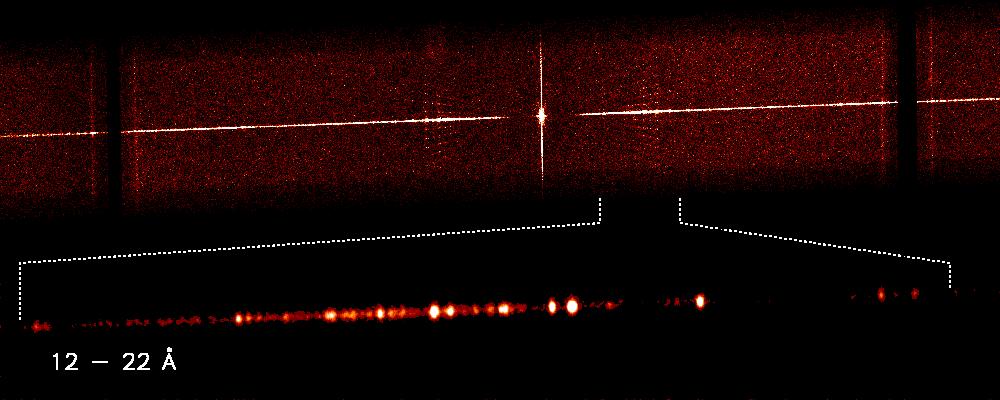
 Credit: Max-Planck-Institut für extraterrestrische Physik & LETG Team
Credit: Max-Planck-Institut für extraterrestrische Physik & LETG Team
First Rainbow: CHANDRA'S Low Energy Grating
The low
energy transmission grating (LETG) on the Chandra X-ray observatory is designed
to split X-ray light into its component wavelengths (or colors) similar to
the way water droplets in the atmosphere disperse sunlight into a rainbow.
This lets astronomers study the makeup of the million degree gas
surrounding stars, galaxies, black holes and other cosmic objects in
detail. On Sunday, September 6, 1999 the LETG was placed in the beam of
the CHANDRA mirrors for the first time, and for the first time detected
X-rays from an astronomical object, the bright nearby star Capella. This
"first rainbow" is shown in the image above. The bright "knots" are X-ray
"emission lines" produced by excited atoms in the extremely hot gas in the
corona which surrounds the surface of Capella. More than 100 emission
lines could be detected in the whole spectrum. The LETG was developed by
the Max-Planck-Institut für
extraterrestrische Physik (MPE) in Garching together with the Space Research Organization Netherlands
(SRON) in Utrecht.
Last Week *
HEA Dictionary * Archive
* Search HEAPOW
* Education
Each week the HEASARC
brings you new, exciting and beautiful images from X-ray and Gamma ray
astronomy. Check back each week and be sure to check out the HEAPOW archive!
Page Author: Dr. Michael F.
Corcoran
Last modified June 14, 2001


